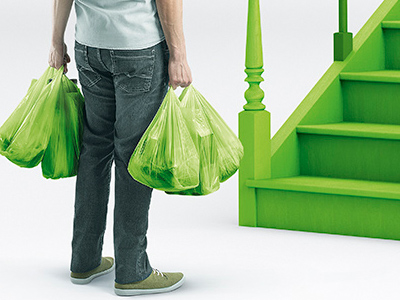Default is false. Both Kibana and Grafana are data visualization tools providing users capabilities to explore, analyze and visualize data with dashboards. You could set the regex to ([^\. For more information, see InfluxDB Cloud regions or InfluxDB OSS URLs. The server option means that any request to a data source will be sent to the Grafana backend server, and the backend will send the request to the data . For example the following query could be modified by selecting the time field, as Time, and Date Format as YYYY. Anaisdg April 14, 2021, 5:46pm 11. You can: In the example below, I hid the value field and renamed Max and Min. To subscribe to this RSS feed, copy and paste this URL into your RSS reader. By setting the width of the axis, data with different axes types can share the same display proportions. SELECT mean("house_power")-mean("device_power") FROM "power" WHERE $timeFilter GROUP BY time($interval), Maybe the documentation helps you also about function DIFFERENCE(), DIFFERENCE() is for the difference between field values, not between fields, Powered by Discourse, best viewed with JavaScript enabled, [VERY NEWBIE ] Show difference between two graphs values, Difference between multiple values in one measurements with InfluxDB. Choose how tooltips behave. Grafana displays a list of fields returned by the query. For more information about how to configure a transformation, refer to. Learn more about Stack Overflow the company, and our products. Check the right column of your InfluxDB Cloud organization homepage Stack Exchange network consists of 181 Q&A communities including Stack Overflow, the largest, most trusted online community for developers to learn, share their knowledge, and build their careers. This function can be used with aggregation functions average, median, sum, min , max, diff, stddev, count, range, multiply & last. Use this transformation to add a new field calculated from two other fields. Side-by-Side : Presenting the Data. opened by srfraser Default is false. Enter the group by transformation! Applied to data in Grafana, it can let you change a lot of individual data points… …into a much more manageable set of calculated data: Here weve taken students scores for a number of subjects and reduced them to an average per student. Choose "Difference" as calculation method. To find support, use the following resources: InfluxDB Cloud customers can contact InfluxData Support. Means: i want to see the difference between heated and non-heated water as a separate graph. First you specify one or multiple fields to group the data by. Choose how null values, which are gaps in the data, appear on the graph. It looks like youve added a transformation. Some options do not take effect until you click outside of the field option box you are editing. Thank you. In the following example, two queries return table data. To read more about why stacking might not be the best approach, refer to Stacked Area Graphs Are Not Your Friend. My favorites are actually the same as Eldins and Aenguss I use these a lot in combining and manipulating data from multiple sources to be able to derive new insights from this data. Use this transformation to join multiple results into a single table. when the subsequent value is less than the previous value and nonNegative is I have a grafana dashboard with 2 influx queries which calculate a single value (A and B). 3 Likes. Note: This transformation is available in Grafana 7.1+. Additional helpful documentation, links, and articles: Opening keynote: What's new in Grafana 9? But keep in mind that transformations are applied one after the other, so the order in which you add transformations may affect your final output. Create a field override for the Stack series option. Sometimes this would be handy to do with simpler data sources. . Downloads. It can render series as lines, points, or bars. Asking for help, clarification, or responding to other answers. The goal is to create an automation that triggers if the temperature difference between two rooms is hoger than 2 degrees a blower switches on which blows the warmer air from the hottest room to the other colder room. When you enable Scheme, the line or bar receives a gradient color defined from the selected Color scheme. When there are multiple transformations, Grafana applies them in the order they are listed. Up to now, the transformations would need to be performed on the data itself; now, if you do not have access to transform the data itself, you can do it in the visualization layer. No, ProjectRoom_St is the Field Key and Field value is 1, Equipment is the tag. You'll see your measurements, you can select Calculation: Difference to plot A-B. You can also or press Enter. Connect Grafana to data sources, apps, and more, with Grafana Alerting, Grafana Incident, and Grafana OnCall, Frontend application observability web SDK, Try out and share prebuilt visualizations, Contribute to technical documentation provided by Grafana Labs, Help build the future of open source observability software What am I doing wrong here? The time series visualization type is the default and primary way to visualize time series data as a graph. Hello everyone, I currently have a MariaDB table that looks like this. The values come from a different measurement. Nice new grafana interface. Then "Add field from calculation". calculate difference between two queries in grafana, How Intuit democratizes AI development across teams through reusability. Combined as above shows empty graph. Use Grafana to turn failure into resilience. Change count. This will group all the same values of those fields together, as if you sorted them. The labels can be displayed either as columns or as row values. How Intuit democratizes AI development across teams through reusability. The following image shows a line chart with the Green-Yellow-Red (by value) color scheme option selected. Transformations were introduced in Grafana v7.0, and Id like to remind you that you can use them to do some really nifty things with your data. Click Apply. results in two frames, each with one row: Use this transformation to rename parts of the query results using a regular expression and replacement pattern. For information about available calculations, refer to Calculation types. Each transformation allows you to add one new field. Influxdb and Grafana combine multiple SELECT. Grafana provides a number of ways that you can transform data. All zeros. SELECT time, ride_count, CASE WHEN step = 0 THEN 'today' ELSE . It covers the time range between 2015-08-17T23:48:00Z and 2015-08-18T00:54:00Z and groups results into 12-minute time intervals and per tag. So instead Ill talk about one other that I use frequently: group by. Conditions that are invalid or incompletely configured are ignored. For instance. Click the Data source drop-down menu and select a data source. Viewed 4k times. Use the or logical operator to filter by multiple fields. kind/feature request, I havent tried this myself, but in theory its possible these days with Flux; see https://www.influxdata.com/blog/influxdb-how-to-do-joins-math-across-measurements/ Connect Grafana to data sources, apps, and more, with Grafana Alerting, Grafana Incident, and Grafana OnCall, Frontend application observability web SDK, Try out and share prebuilt visualizations, Contribute to technical documentation provided by Grafana Labs, Help build the future of open source observability software You might also use this to narrow values to display if you are using a shared query. The data are streamed from InfluxDB every 15 minutes with different timing. What is the purpose of this D-shaped ring at the base of the tongue on my hiking boots? So, for example, the value at 08:30 describes the average number of orders per minute that were created between 08:25 and 08:30, the value at 08:31 describes the average number of orders per minute that were created between 08:26 and 08:31, and so on In our very simple example with its constant rate, this range does not make any difference. Here is the original query table. Setting Thanks! Time to send out those report cards! I updated my question with proper interval value - it's the same for both measurements - still does not work. rev2023.3.3.43278. Updated query - with proper interval - still does not work. Select the Multi-frame time series option to transform the time series data frame from the wide to the long format. Select your field names A and B. As you can see in the picture below, I have a result set which consists of three sums grouped by the even_type.keyword. By clicking Post Your Answer, you agree to our terms of service, privacy policy and cookie policy. I use this YAML code: # Calculated Value Sensor # Temperature difference between Magazijn en Entree - platform: template sensors . Soft min and soft max settings can prevent blips from turning into mountains when the data is mostly flat, and hard min or max derived from standard min and max field options can prevent intermittent spikes from flattening useful detail by clipping the spikes past a specific point. sortBy(seriesList, func='average', reverse=False) . Each field now also has a max config option set. Could you please tell me how the tranformation must look like in order to achieve this? If using Linux, you may need to update your package configuration to continue The labels to fields transformer is internally two separate transformations. Customize this value by defining Label on the source query. Open positions, Check out the open source projects we support The result after applying the outer join transformation looks like the following: In the following example, a template query displays time series data from multiple servers in a table visualization. Additional helpful documentation, links, and articles: Opening keynote: What's new in Grafana 9? For example, if you use a Reduce transformation to condense all the results of one column into a single value, then you can only apply transformations to that single value. Downloads. In the example below, I added two fields together and named them Sum. (This is streaming data, so numbers change over time and between screenshots.). Grafana queries the data source and visualizes the data. Now I can run calculations, combine, and organize the results in this new table. When you hover your cursor over the visualization, Grafana can display tooltips. Use filter() to return only the fields necessary for your calculation. Click Query options to configure the maximum number of data points you need. The best answers are voted up and rise to the top, Start here for a quick overview of the site, Detailed answers to any questions you might have, Discuss the workings and policies of this site. This automatically creates a new override that sets the color scheme to single color and the selected color. Line width is a slider that controls the thickness for series lines or the outline for bars. then it should be easy like, SELECT fieldA - fieldB AS whatever FROM , If they are coming from different measurements it is not so easy but possible. I don't want to paste here my trials, because grafana does not understand clause UNION ALL. If the order of a field changes in your query, the color also changes. This transformation includes a field table which lists all fields in the data returned by the config query. Next, I join TC with TH. To change the color, use the standard color scheme field option. Values are mergeable if the shared fields contain the same data. What sort of strategies would a medieval military use against a fantasy giant? Identify your InfluxDB Cloud cluster. Transformations are a powerful way to manipulate data returned by a query before the system applies a visualization. Site design / logo 2023 Stack Exchange Inc; user contributions licensed under CC BY-SA. You can configure your visualization to add points to lines or bars. Email update@grafana.com for help. Can airtags be tracked from an iMac desktop, with no iPhone? Hi, I am using Influx 1.7 and grafana I need to get difference between two unix timestamp in seconds, as per below query, SELECT $__to - "timestamp" as "DIFF" FROM . Perform mathematical operations across queries, Use the output of one transformation as the input to another transformation. Are there instructions on how to do that? but this works fine if we have different fields from the same measurement, but this does not work (for me) when adding values from different measurements. The results of only one query can be viewed at a time. Calculating probabilities from d6 dice pool (Degenesis rules for botches and triggers). Making statements based on opinion; back them up with references or personal experience. Set the style of the line. To get the accurate total requests in a period of time, we can use offset: http_requests_total - http_requests_total offset 24h. In the example below, the panel has three queries (A, B, C). My number one use case is usually doing maths across multiple data sources.. the result would be: The Reduce fields with the Last calculation, Kibana was built on top of the Elasticsearch stack, famous for log analysis and management. To change the color, use the standard color scheme field option. You can also choose which value to select if there are multiple rows in the returned data. i try several querys without success , any idea ? Unify your data with Grafana plugins: Datadog, Splunk, MongoDB, and more, Getting started with Grafana Enterprise and observability. To transform this data to a more usable format for calculations, use the join transformation to transform the data to display all modes on a single line, per timestamp. Can you share a screenshot of that as well? Email update@grafana.com for help. If you want to extract config from one query and appply it to another you should use the config from query results transformation. To illustrate this, here is an example where you have two queries that return time series with no overlapping labels. Staging Ground Beta 1 Recap, and Reviewers needed for Beta 2, Using InfluxDB subquery to subtract values, grafana working with time difference influxdb, Grafana and Influx time since last measurement, Grafana dashboards combine two SQL queries. Open positions, Check out the open source projects we support It only takes a minute to sign up. The Fill below to option fills the area between two series. This option controls how the graph interpolates the series line. View of static / relational data before join: View of static / relational data joined together in one result:. Hello, I have a graph showing 2 . What Is the Difference Between 'Man' And 'Son of Man' in Num 23:19? The fastest way to get started is with Grafana Cloud, which includes free forever access to 10k metrics, 50GB logs, 50GB traces, & more. I dont think it is possible across measurements. Alias - (Optional) Enter the name of your new field. are backed by the new InfluxDB IOx storage engine which enables nearly unlimited This type of join excludes You have the option to include or exclude data that match one or more conditions you define. True when all values are null. Grafana Labs uses cookies for the normal operation of this website. difference() returns the difference between subsequent values. We hope you get to apply some in your beautiful dashboards! It is versatile enough to display almost any time-series data. Database Administrators Stack Exchange is a question and answer site for database professionals who wish to improve their database skills and learn from others in the community. So right now I have to choose between: Having null values, being able to "split" the graph depending on the treshold but being unable to see the nearest point's values . Max has a Fill below to override set to Min, which fills the area between Max and Min with the Max line color. RATE(m1) RATE(METRICS()) REMOVE_EMPTY. Im facing a similar issue, i need to compare 2 times, of different versions, say R1 and R2, and plot the percentage difference in a 3rd column. Apologies if this is a duplicate, I had a look and couldn't see a relevant issue. Minimising the environmental effects of my dyson brain. SQL has this natively, and its used there frequently as its a great way of distilling patterns out of large sets of data. While the inner join joins Query A and Query B on the time field, the outer join includes all rows that dont match on the time field. Asking for help, clarification, or responding to other answers. @leeoniya Just updated to 8.1.10-beta2 but they still connect even if the treshold is smaller than the difference between the time of . 1.8 version of Influxdb whereas there is no any download link available for windows of InfluxDB2.0 version.I am using grafana latest stable version(7.2.1). For instance, we could want to calculate the average CPU temperature for each of those servers. Notes about . `SELECT mean(A)-mean(B) FROM whatever WHERE $timeFilter GROUP BY time($interval) fill(none). Email update@grafana.com for help. What's the difference between a power rail and a signal line? But sometimes all your panels may need is a small tweak to drastically clean up how the data is visualized.. Consider a metrics SQL table with the following data: Prior to v9.3, if you wanted to plot a red trendline for US and a blue one for EU in the same TimeSeries panel, you would likely have to split this into two queries: SELECT Time, Value FROM metrics WHERE Time > '2022-10-20' AND Region='US'SELECT Time, Value FROM metrics WHERE Time > '2022-10-20' AND Region='EU'. Select the series for which you want the fill to stop. Topological invariance of rational Pontrjagin classes for non-compact spaces. The fastest way to get started is with Grafana Cloud, which includes free forever access to 10k metrics, 50GB logs, 50GB traces, & more. Note: You can migrate from the old Graph visualization to the new Time series visualization. Difference from two values of the same series. Filtered fields are displayed with dark gray text, unfiltered fields have white text. Grafana Labs uses cookies for the normal operation of this website. Selecting Show --> Cacluation and Calculation --> Total calculates the difference: https://play.grafana.org/d/p-aTRUqMk/transformation-test-copy?orgId=1&editPanel=2. Topological invariance of rational Pontrjagin classes for non-compact spaces. The following steps guide you in adding a transformation to data. This would include the first row in the original data, which has a temperature of 32C (does not match the first condition) but an altitude of 101 (which matches the second condition), so it is included. airvb April 29, 2020, 7:44am 1. Select "Replace all fields" if you only want to see the difference. Or +25 would work for my purposes just as well. How can I achieve this? Documentation Dashboards Plugins Get Grafana. It is versatile enough to display almost any time-series data. SELECT last("value") FROM "chaudiere" WHERE ("topic" = 'chaudiere_1/T.INTERNE/T.interne') AND $timeFilter GROUP BY time($__interval) fill(previous) Do new devs get fired if they can't solve a certain bug? With my transformation above, I just wanted to remove the ZapaShipmentDelcarationSent value from my query so I can calculate the difference (ShipmentDeclarationSent - CancelOrderSent). github.com/influxdata/influxdb If nonNegative and initialZero are set to true, difference () returns the difference between . This public demo dashboard contains many different examples of how it can be configured and styled. Did any DOS compatibility layers exist for any UNIX-like systems before DOS started to become outmoded? This article introduces a technique to filter and productively compare two time periods with Power BI. This transformation helps you resolve this issue by converting the time series data from either the wide format to the long format or the other way around.
Demi Lovato's Mom As A Dallas Cowboy Cheerleader,
Articles G



















